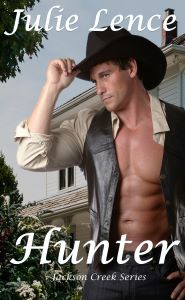 |
| courtesy Lara Williard |
In writing romance, some stories deserve a good villain. Developing such a character sometimes proves easier and more fun than creating the hero and heroine. A villain has a lot more leeway on what he can say or do. He’s the one person you enjoy hating, (think of J.R. Ewing), or even cheer for. Heroes and heroines have to be likeable and cannot commit too many dastardly deeds without good reason (think Bobby Ewing). But what drives a villain? And does a villain have to be a person?
One of the best villains I created was Lady Luck’s William Larsen. Driven by money and comfort, William was evil to the bone and didn’t care who he killed or hurt just as long as he was the victor in any given situation. He wasn’t a big man, appeared to be a weakling by the henchmen he kept in his employ and the bodyguards who shadowed him, and if you ask the women he kept time with, most would say he wasn’t handsome; their only reasons for being his mistress either his money or fear. As I delved deeper into William’s psyche, because, after all, what makes a man that money hungry and evil, I learned his was not a happy, or normal, childhood. He was an orphan, living along the docks on the east coast, pilfering what little food and clothes he could, taking shelter in one shack after another, fear and human instinct to survive pulsing through him. As he matured, it was the fear of losing what little he’d scrappled to gain and forever living in poverty that kept him chained to darkness; a man who was unwilling to trade his ill-found wealth for honor, friendship, and even love.
Where William is a villain in the form of a person, can there be another form of a villain? One where the author doesn’t imagine hair color or physique but rather something below the surface that can’t be seen with the naked eye? There is and Hunter Barlow knows this villain well. The son of a madam who viewed him as nothing more than a nuisance and brothers who deserted him, one could make the assumption that Hunter’s mother and brothers are the villains in his story, but in truth, Hunter’s emotional turmoil is the antagonist to his protagonist. Betrayal and heartache are what he has to acknowledge and defeat, not a face determined to see him penniless or dead, and sometimes it’s those battles that fester deep within that are much harder to defeat than an evil man.
Whether a person or an emotion, delve as deep as you can into your villain. Find out the reason for such evilness or for a deep-rooted fear of never being loved. I guarantee your snooping will lead you to places you never imagined, and make your story that much better. And your hero will thank you for it.



No comments:
Post a Comment
Our readers: If you like a post, please consider sharing on your Facebook and/or Twitter pages, and leave a comment. The cowgirls welcome them and will respond if you ask questions. Any Spam will be deleted.